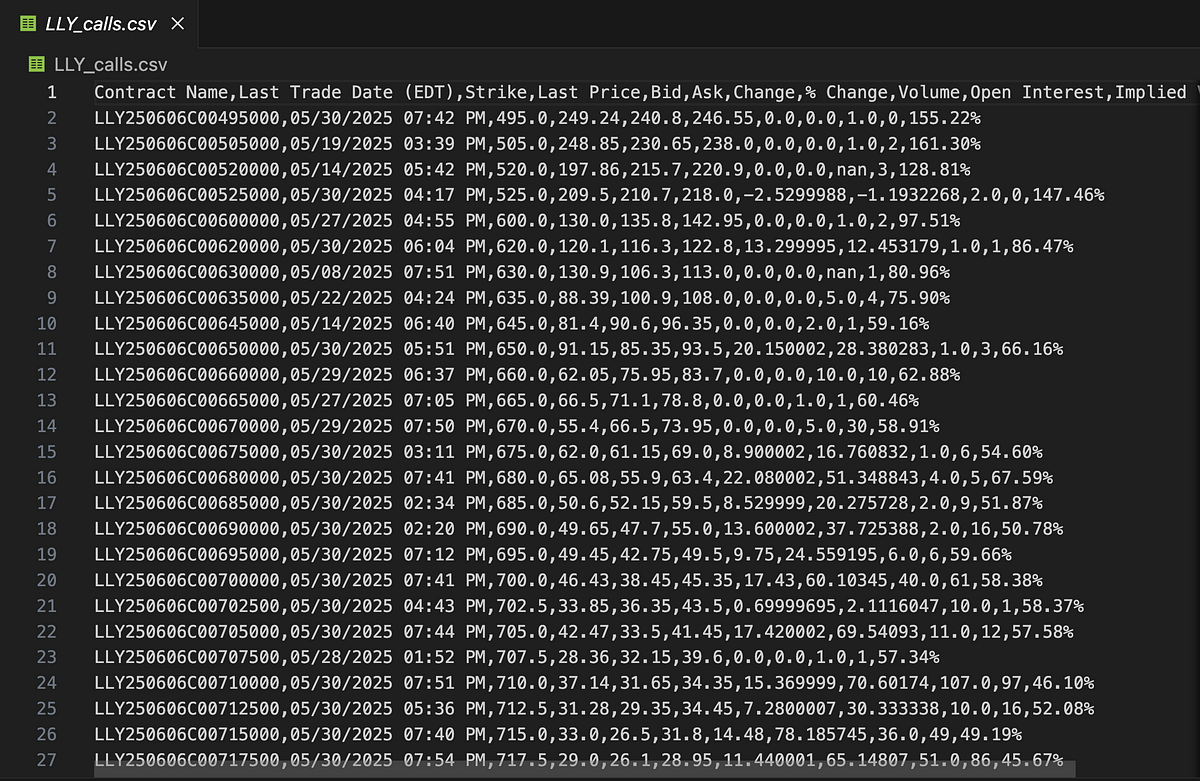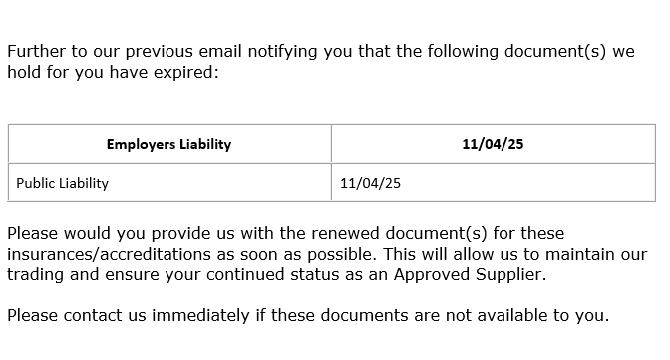Programming News
Dev
395

Image Credit: Dev
How to use FFmpeg with C++ (Windows and GNU/Linux)
- ffpp is a dynamic C++ library with an API for major FFmpeg tasks, designed for faster integration in GUI applications on both Windows and GNU/Linux.
- On Windows, using ffpp library involves downloading libffppwin, creating a basic code, compiling with Clang, and running scripts to build and execute the program.
- On GNU/Linux, after installing necessary dependencies and building ffpp from GitHub, a similar process for creating code, compiling, and running is followed.
- The API examples with ffpp involve tasks like converting video formats, extracting frames, getting video information, and cutting a video from a specific time point with a specific duration.
Read Full Article
23 Likes
Dev
328

Image Credit: Dev
Simplify Your API Calls in React with em-use-controller
- em-use-controller is a utility for React and other SPAs that simplifies API calls by turning REST API routes into declarative, type-safe controller functions.
- With em-use-controller, developers can define routes once in a config file, set global defaults for headers, baseURL, and error handling, and call any endpoint with one-liners using useController.
- Features include working with all HTTP methods, handling path and query parameters, supporting Bearer and custom auth, built-in global error handling, swappable axios instance, and uploading files with FormData.
- Ideal for frontend developers using RESTful APIs, especially in .NET, Java, Spring, or Node environments, those who dislike boilerplate code, and teams striving for cleaner and safer API usage.
Read Full Article
19 Likes
Dev
248

Image Credit: Dev
Answers to the GitHub Foundation Quiz
- Custom issue forms are stored in the github/ISSUE_TEMPLATE folder.
- Commits on branches can be linked to pull requests.
- GitHub Teams offer SAML single sign-on authentication and more GitHub Actions minutes.
- GitHub Actions workflows are stored in the github/workflows directory using YAML syntax.
- Private repo wikis can be viewed by those with Read access to the repository.
- GitHub repositories serve as collaborative spaces for developers.
- GitHub's primary goal is to facilitate collaboration and creativity.
- Codespaces have lifecycle stages like Create, Delete, and Rebuild.
- Pull request statuses can be open, closed, merged, or draft.
- Insights allow for pre-built visualizations from repository data.
- GitHub Actions workflows can be triggered by creating an Issue, pushing to a repository, or creating a new repository.
- GitHub Copilot is an AI pair programmer providing autocomplete-style suggestions.
- GitHub Pages enable hosting webpages through repositories.
- In Git, a branch is a pointer to a snapshot of the project at a specific time.
- GitHub is a cloud-based service for version control and collaboration, offering a safe environment for developers.
- Saved replies allow reusable responses to issues and pull requests, tied to a user's account.
- Markdown is a markup language used on GitHub for formatting text.
- 2FA methods include security keys, authenticator apps, and GitHub mobile for enhanced security.
- CODEOWNERS files automatically set reviewers for pull requests.
- A gist on GitHub is akin to a repository where code snippets can be shared.
Read Full Article
14 Likes
Medium
159

Image Credit: Medium
How to Win at Battleship
- Battleship is a classic two-player game involving hidden information, guessing, and luck, believed to have originated in the early 1900s from the French game L’Attaque.
- The game likely drew influence from Basilinda and became popular among soldiers in World War 1 before becoming a staple family game.
- Initially played with pencil and paper, Battleship was transformed into its iconic plastic version by Milton Bradley in 1967.
- In standard Battleship, players set up their ship arrangements hidden from the opponent, with ships of various lengths and placement rules, creating a strategic challenge.
Read Full Article
9 Likes
Discover more
- Software News
- Web Design
- Devops News
- Open Source News
- Databases
- Cloud News
- Product Management News
- Operating Systems News
- Agile Methodology News
- Computer Engineering
- Startup News
- Cryptocurrency News
- Technology News
- Blockchain News
- Data Science News
- AR News
- Apple News
- Cyber Security News
- Leadership News
- Gaming News
- Automobiles News
Medium
155

Image Credit: Medium
The Ultimate Guide to Lossless Compression Algorithms
- Lossless compression algorithms like LZ77, Huffman coding, and Deflate are vital in reducing file sizes effectively.
- Archivers bundle multiple files into a single container before compression.
- LZ77 algorithm replaces data repetitions with references to previous occurrences for compression.
- Deflate combines LZ77 compression with Huffman coding to achieve efficient compression.
- LZMA 2 powers .xz and .7z formats and applies LZMA algorithm with Range Coding for compression.
- Range Coding offers an efficient alternative to Huffman coding for symbol encoding.
- BWT algorithm sorts data to group similar characters for run length encoding, followed by Huffman coding.
- Compression speed: gzip > lzma > bz2, while compression rates depend on the data nature.
- The article provides insights into various lossless compression algorithms and their implementations.
- It emphasizes the importance of understanding compression techniques for efficient data storage and transfer.
Read Full Article
9 Likes
Medium
66

Image Credit: Medium
Pulling Options Data with Python and yFinance — and Saving it Like a Pro
- The goal of the code is to retrieve options data for a specific stock ticker and expiration date using the yfinance library in Python.
- The code formats the options chain data neatly and saves the data into two CSV files:
_calls.csv and _puts.csv. - Each row in the CSV files includes details such as contract symbol, last trade timestamp, strike price, bid/ask prices, volume, open interest, implied volatility, among others.
- This script can be useful for options backtesting, volatility screening, and automated reporting by leveraging real-time options data and Python's capabilities.
Read Full Article
4 Likes
Medium
67

Image Credit: Medium
4 Dev-Tools That Can Actually Help You Save Tons of Time.
- Discover 4 dev tools that can save you time and improve efficiency in your workflow.
- One tool mentioned is 'everything' which helps in quick file searching within repositories by fetching files instantly.
- The tool is lightweight and can be run in the background without any issues, making file navigation much more efficient.
- Consider giving these tools a try to enhance your productivity and streamline your development process.
Read Full Article
4 Likes
Dev
155

Image Credit: Dev
🧱 Building a Front-End Web App in 2025: What You Actually Need
- Start with mapping out user flow before coding the front-end web app using tools like Figma or simple sketches.
- Select a scalable tech stack like React or Vue, Vite for bundling, Tailwind CSS for styling, and Zustand or Redux for state management.
- Emphasize modular components for better organization by breaking UI into testable, reusable pieces following specific folder structures.
- Prioritize performance by lazy loading routes and images, using local fonts and SVGs, and analyzing performance with tools like Lighthouse.
- Ensure accessibility by using semantic HTML, enabling keyboard navigation, and testing with screen readers to make the front-end web app inclusive.
Read Full Article
9 Likes
Dev
230

Image Credit: Dev
Introducing Jawbone Sockets
- Introducing Jawbone.Sockets, a new socket library for game developers developed by the creator of Jawbone lib.
- Jawbone.Sockets focuses on zero allocation and improved performance compared to System.Net sockets, with a simplified design using Span
. - The library includes IpAddressV4 and IpAddressV6 structured as union structs for flexible data reinterpretation, benefiting operations like initialization, parsing, formatting, and hashing.
- Jawbone.Sockets supports both IPv4 and IPv6 through generic addressing with implementations for IIpAddress
, enhancing generic communications handling and versatility.
Read Full Article
13 Likes
Medium
22

Image Credit: Medium
The Backbone of AI: My Machine Learning & Deep Learning Self-Learning Path
- In 2020, the terms Machine Learning, Data Science, and Deep Learning gained significant popularity, sparking curiosity and interest in many individuals.
- Despite initially finding these concepts complex and futuristic, the author found themselves intrigued and engaged in learning more.
- The author shares a self-learning path that took them from being a beginner to building real AI applications, emphasizing that this path is accessible for others interested in AI.
- This roadmap to learning AI does not require a computer science degree or expensive courses; it focuses on utilizing the right resources and having a clear learning path.
Read Full Article
1 Like
Medium
204

Image Credit: Medium
Automated Email Reporting with Databricks: From Data to Inbox
- Creating an automated notification system to monitor credit risk data and send targeted email reports to different regional teams using Databricks.
- Data resided in Snowflake, processing in Databricks, and results delivered as HTML tables directly to email inboxes.
- Challenges included monitoring different company codes, varying stakeholders, and diverse escalation requirements for each region.
- Emphasis on ensuring sensitive credit information reached appropriate regional teams with proper CC protocols and clear, actionable data presentation.
Read Full Article
12 Likes
Medium
22

Image Credit: Medium
Native Stream Handling with JavaScript Web Streams API
- The Web Streams API in JavaScript provides a way to handle data piece by piece, which is useful for real-world applications where data arrives incrementally.
- Before the Web Streams API, stream handling in JavaScript was inconsistent between Node and browser environments.
- The API standardizes stream handling with ReadableStream, WritableStream, and TransformStream, working seamlessly across browsers, Node, and Deno.
- Readable streams allow control over the flow of data, with a queuing strategy and backpressure management.
- Writable streams handle data writing to destinations, managing queues and backpressure efficiently.
- Connecting readable and writable streams, and adding transforms in between, allows for building multi-step processing systems easily.
- The Web Streams API is widely supported in modern browsers without the need for polyfills, facilitating streaming operations in web applications.
- Newer versions of Node also support the Web Streams API, making it easier to develop applications that run on both the client and server sides.
- Streams can be utilized for various tasks like working with network responses, decoding data, handling compressed files, and more.
- Custom stream pipelines can be built for specific data processing tasks, providing flexibility and efficiency in handling data incrementally.
Read Full Article
1 Like
Dev
88

Image Credit: Dev
Containerized Java Microservices: A Modern Architecture Approach
- Containerization with Docker is a crucial approach for designing scalable and maintainable architectures in software development.
- Benefits of using containerized Java microservices include improved scalability, easier deployment, better resource utilization, and enhanced isolation and management.
- To implement a containerized Java microservice architecture, you need to identify microservices, choose a containerization platform like Docker, create a Dockerfile, build and run the container, and integrate with other services.
- Following these steps enables the design of a scalable and maintainable Java microservice architecture using containerization with Docker.
Read Full Article
5 Likes
Dev
146

Image Credit: Dev
Day 4, Session 1 on HTML, focusing on responsive navigation bars
- Building a responsive navigation bar is essential in today's web design for seamless adaptation on different devices.
- The tutorial focuses on creating a simple responsive navigation bar using HTML and CSS, incorporating site logo, menu links, and a hamburger (☰) icon for small screens.
- Key HTML structure includes semantic tags like
Read Full Article
8 Likes
Dev
84

Image Credit: Dev
🔍 Learning TanStack Query — But First, Manual Caching
- The author delves into learning TanStack Query (formerly React Query) to explore its data fetching and caching capabilities.
- Before relying on abstracted tools, the author decided to understand the problem caching solves by implementing a basic manual caching system.
- The author identified inefficiencies in making repetitive API calls for the same data and devised a simple in-memory caching approach to enhance performance.
- By implementing manual caching, the author gained insights into caching systems, memoization logic, and the trade-offs involved, realizing the advantages of tools like TanStack Query in handling complex caching scenarios.
Read Full Article
5 Likes
For uninterrupted reading, download the app